Kurt & Plasto – By the Commission’s Decision: Everyone to One’s Own
“By the Commission’s Decision: Everyone to One’s Own”
Ownership in B&H
In 2001, the international conference “Ownership in B&H” was held in Konjic (B&H). The organizers proposed to the Sarajevo Center for Contemporary Art (SCCA) to decorate the hall in front of the conference room with an “art exhibition”. Instead of it SCCA proposed something completely different: an activist art action or an intervention on the Sarajevo main place by two young artists, Kurt & Plasto. The project waited in the file for financial support. Thanks to the Ownership Conference SCCA could realize it.
The intention of this action – somewhat ironically entitled “By the Commission’s decision: everyone to its own” fully filled with the theme of the conference – “Ownership in B&H”; from its title that recalls a painful process of return of refugees and displaced persons, to the issue of managing the processes in culture and art by politicians and their arbiters in culture. The problem they had tackled referred – and it still refers – to the return of the monuments (busts) of Bosnian and Herzegovinian writers and poets and other worthy (renowned) personalities to their original places, i.e. to the decapitated pedestals.
“By the Commission’s decision: everyone to its own”,
At the Liberation Squarein the very center of the city, the busts of eight writers were removed from the pedestals to be protected in the beginning of the siege and shelling of Sarajevo in 1992. From the end of the war, in 1996, they have not been brought back. The names of the “owners” of the removed heads were still carved in stone which were the only existing information left on the pedestals are as following: Ivo Andrić, Skender Kulenović, Branko Čopić, Isak Samokovlija, Meša Selimović, Rodoljub Čolaković, Veselin Masleša and Mak Dizdar.
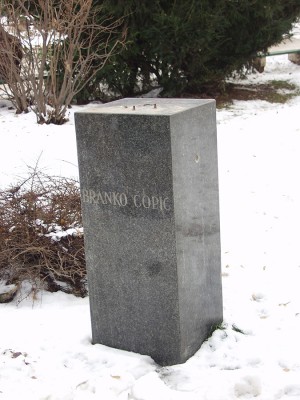
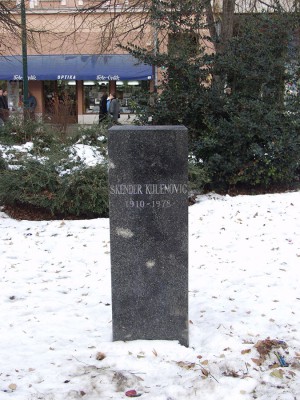
It is obvious that these personalities come from different a national background which was normal inBosnia and Herzegovinaas one of the multinational communities before the war. Some of them became “politically incorrect” because of “wrong nationality” in redesigned history after the war, and dividedBosnia and Herzegovinaupon national criteria. That was the essential hidden political reason not to put the busts back to their original places after the war.
That’s why in this particular case two sets of questions were raised: 1. who are the owners of the public spaces in the cities – citizens or the governing political authorities? 2. Who owns our memory, who controls and decides on cultural and artistic heritage, who erases the memory but also the history and writes new ones?
To show the hypocrisy on one side and the eloquent silence on the other of the « invisible » owners of the public space and our memory, whom we wanted publicly disclose, was the intention of this action. The additional Kurt&Plasto’s reason to do it was to initiate a public debate and incite an effective public reaction to this cultural, social and political disgrace.
Act One: October 20 – November 24th, 2001
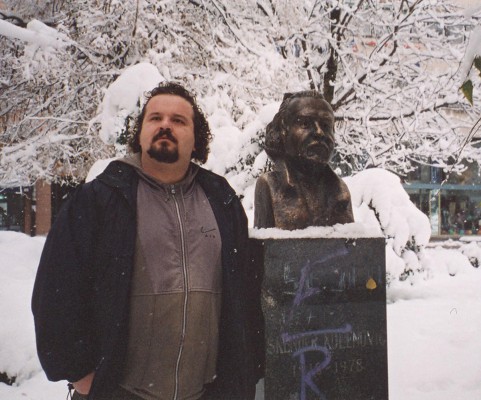
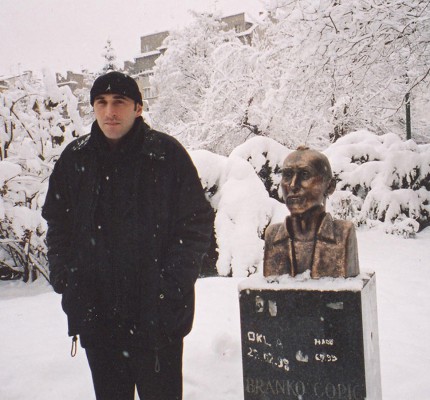
The agenda of the project was as following:
First, Kurt & Plasto invited their colleague Darko Šobot to sculpture their busts out of plaster and to paint them in bronze color.
The public action started three weeks before the day when the busts were to be installed on the empty pedestals, by sending out press releases – anonymous messages – to all the daily and weekly newspapers, magazines, TV and radio stations, which contained the text: “So many (20, 15, 3…) days until the decision of the commission is made”.
Act Two: November 24th – December 27th, 2001
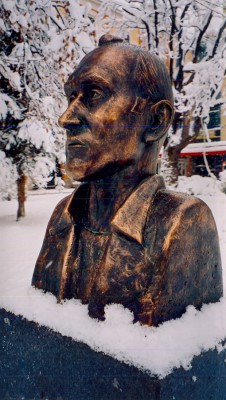
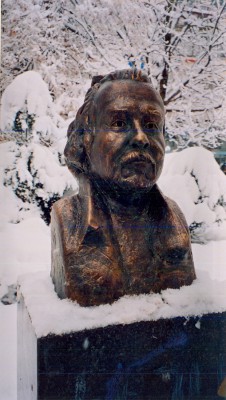
In the morning of the 24th of November 2001, the day before the National day of Bosnia and Herzegovina, Kurt and Plasto’s heads/ busts were mounted on the headless pedestals – one of Kurt and another of Plasto repeated eight times. The leaflet which was handed over to the passers by was saying: “By the Commission’s decision: everyone to his own. It is necessary to influence the change of the reigning practice in the past and present time, where not only artists, but all citizens have always been hostages to forgetting their own heritage, or objects to erasing memory. » Signed – Kurt & Plasto.
Casual passers by, public persons and media representatives attended this event.
The same day at noon, SCCA organized public debate on the above-mentioned issue: “Who owns the public space; who owns spiritual, intellectual, cultural and artistic heritage?” In the presence of around 50 invited public persons from different fields, mentioned issues were discussed. It was unanimously decided to express civic disobedience and to put the original busts back without asking any official permission.
In the following month, SCCA took the responsibility to realize the decision of the informal “commission”.
Act Three: December 27th, 2001
On the 27th of December the busts were at their original places, up to that date hidden in the depot of National Theatre. Seven busts were mounted back without any problem and with the support of the audience gathered that day. One incident happened when the new owners of the building of publishing house “Svjetlost” didn’t allow us to put the bust of Veselin Masleša on his place in the park near their building, claiming it to be their own property and that they don’t want in their neighborhood this writer and anti-fascist who was Nazi victim during World War II.
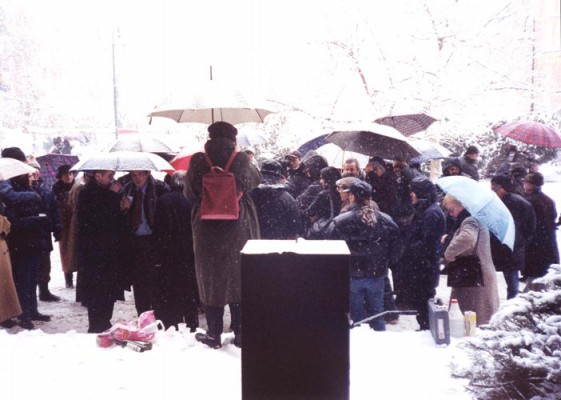
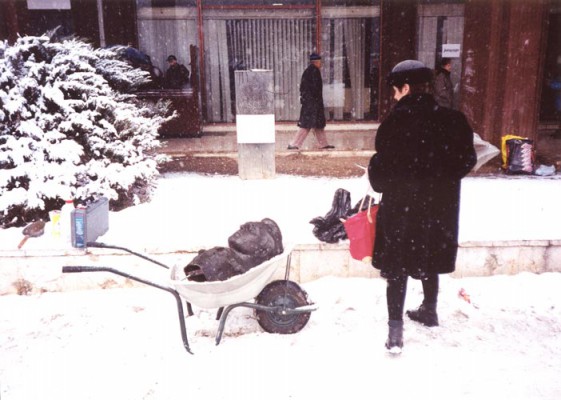
This action drew big public attention and received full support of the public, common people and media. It proofs how one artistic action can provoke a series of public events and reactions and also help building the public opinion on sensitive social and political issues.
Act four – Happy end: …
Ten years later Veselin Masleša’s bust took its place (June 10th, 2011) on the pedestal thanks to Meyer of Sarajevo city.
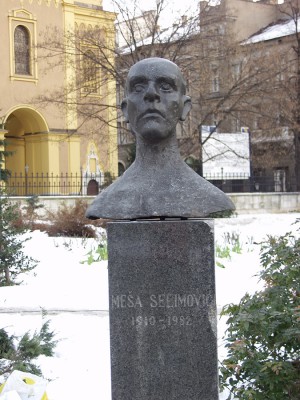
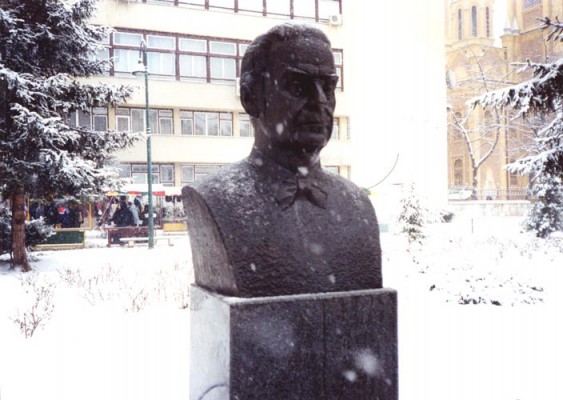

Continuity
Kurt & Plasto’s artistic action “By the Commission’s decision: everyone to his own” (as well as the art works in public space of the other artists made within the exhibitions produced by the Sarajevo Center for Contemporary Art since 1997), were immediate motive for a new „De/Construction of Monument” project initiated in 2003. This multi-disciplinary three years long Project is the continuation of program practice of the Sarajevo Center for Contemporary Art by giving support to those art projects which publicly and openly raise issues related to our time and start a direct dialogue with citizens in a new and untraditional way, both in form and in content.